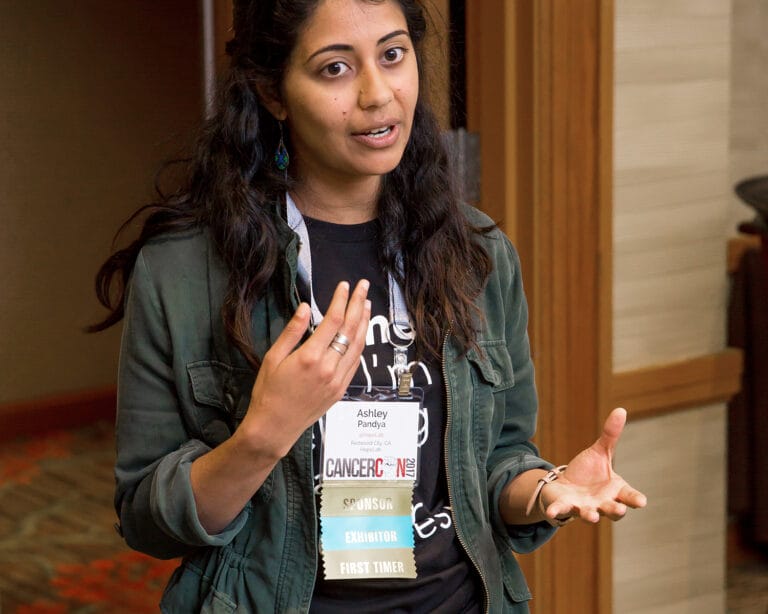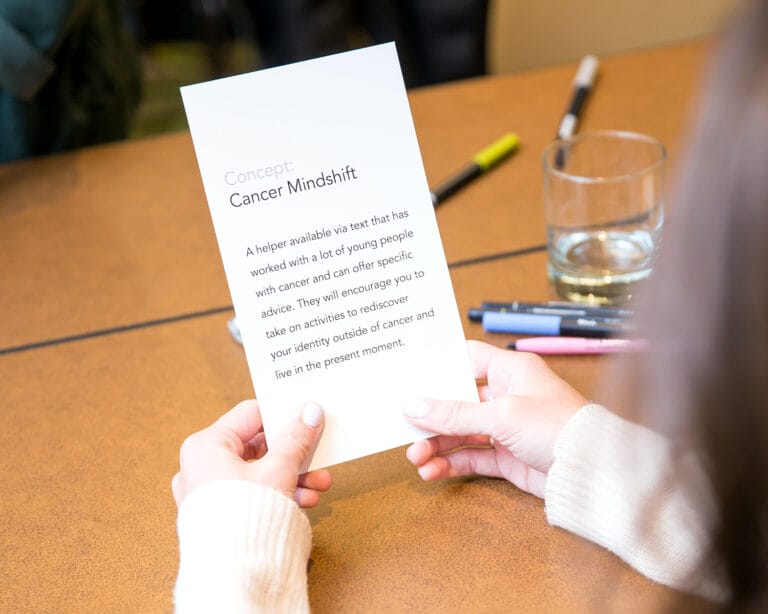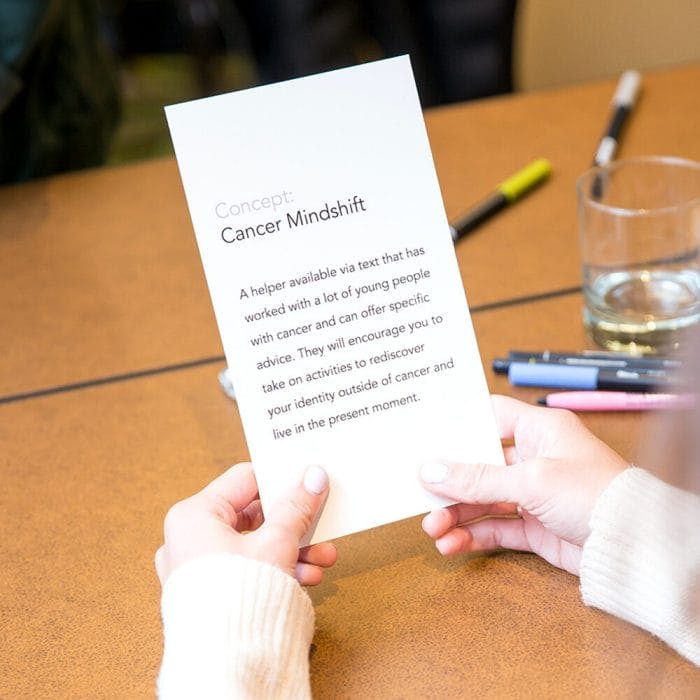Over the course of the last four months, Hopelab’s Adolescent and Young Adult (AYA) Cancer team has been deeply involved in the design research phase of our project, in which we met with young cancer patients and survivors to understand what their psychological needs are and how they use technology. Here’s part two of our three part series.
We don’t always know what kind of technology we want:
Throughout our design research phase we struggled to get honest reactions to technology. We asked AYAs how they envisioned products. We asked for their feedback on user interface mockups. We asked them to design their own products. Each time, people expressed discomfort with “new” forms of technology (e.g. VR/AR, chatbots) and described their ideal technology as what currently exists (e.g. Uber, Tinder). In other words, most people we spoke with couldn’t envision new forms of technology – they biased heavily towards what they knew (status quo bias). But we know that actual human behavior suggests otherwise – otherwise we would never accept and adopt new technological practices, ever.
So we tried an experiment – we asked a group of people about their interest in chatbots (lukewarm at best). Then we showed a different group of people a video of what an interaction with a chatbot actually looked like – and the difference in the reactions between the two groups was astounding. The group who watched the video smiled, laughed out loud, and even asked when the chatbot would be available for download and how they could get access to it. It was the most positive reaction to a concept that we’d received thus far.
It’s not always easy to build and release a quick prototype, but there are ways to quickly and scrappily validate interest in a product – it just takes a little creativity.
The Cancer Mindshift blogs are an ongoing series documenting our project work with adolescent and young adult (AYA) cancer patients. This project aims to transform the AYA cancer treatment experience by promoting psychological resilience, empowering young adults to direct their own care, and supporting young people as they leave treatment and begin a new life beyond cancer.







